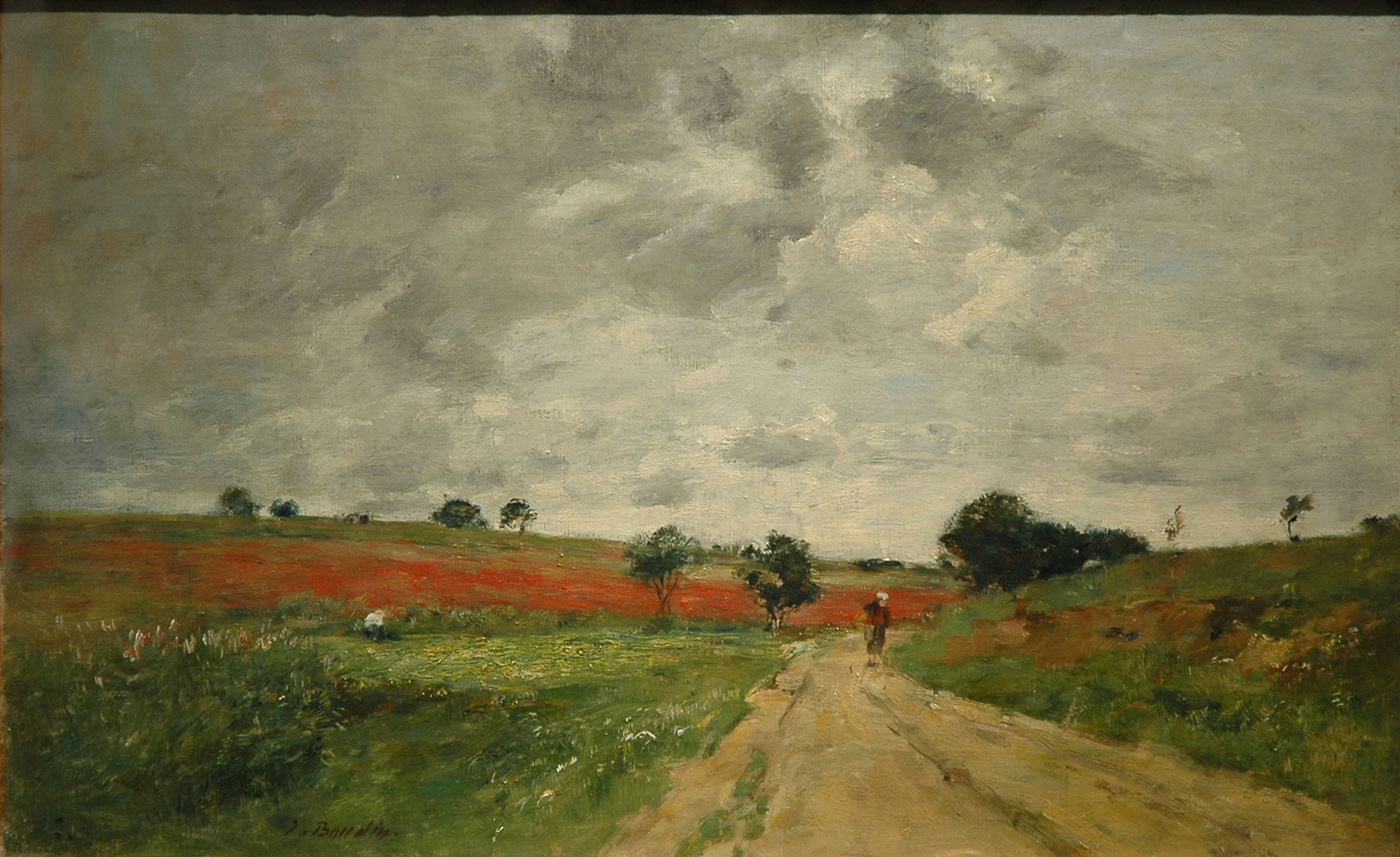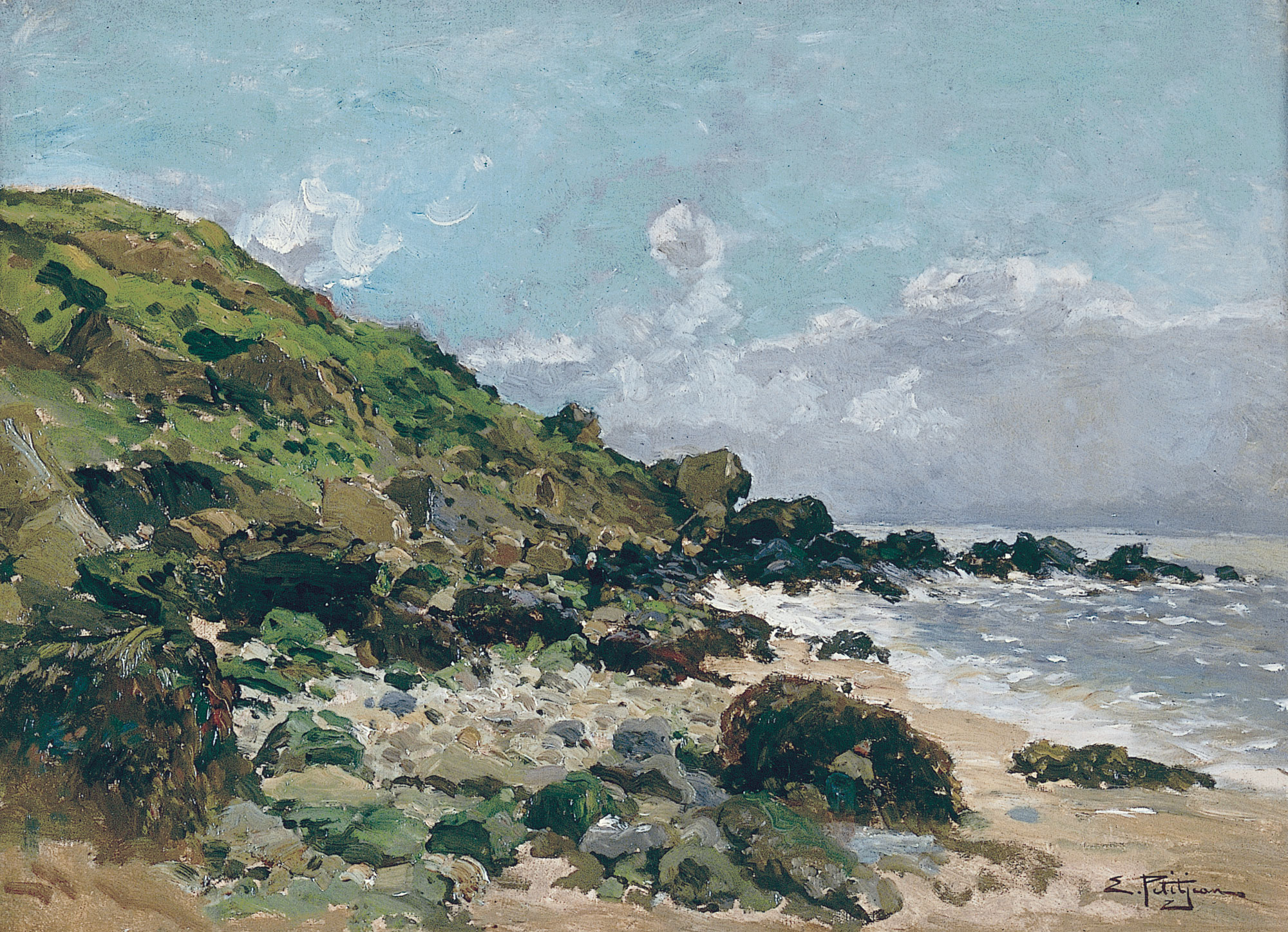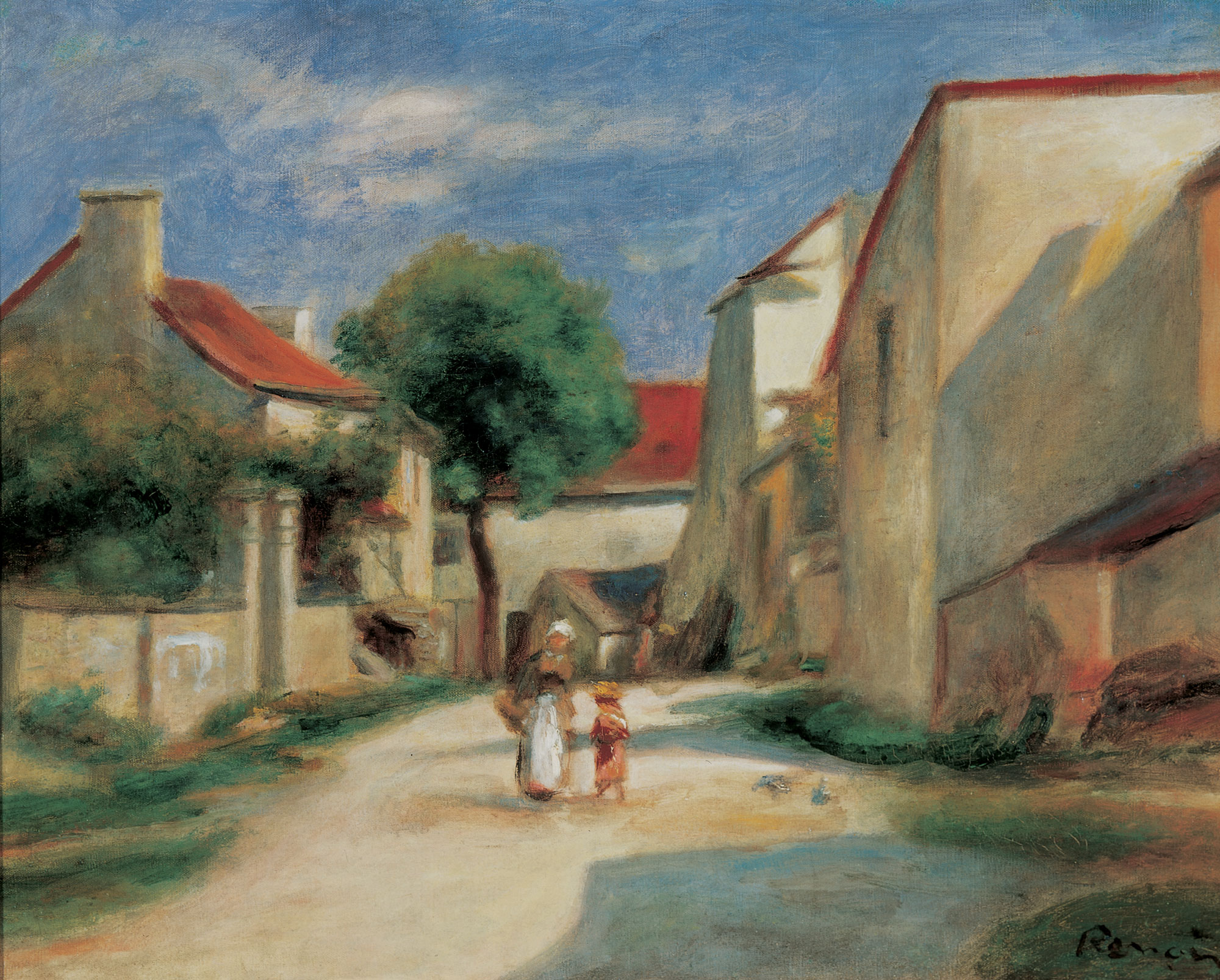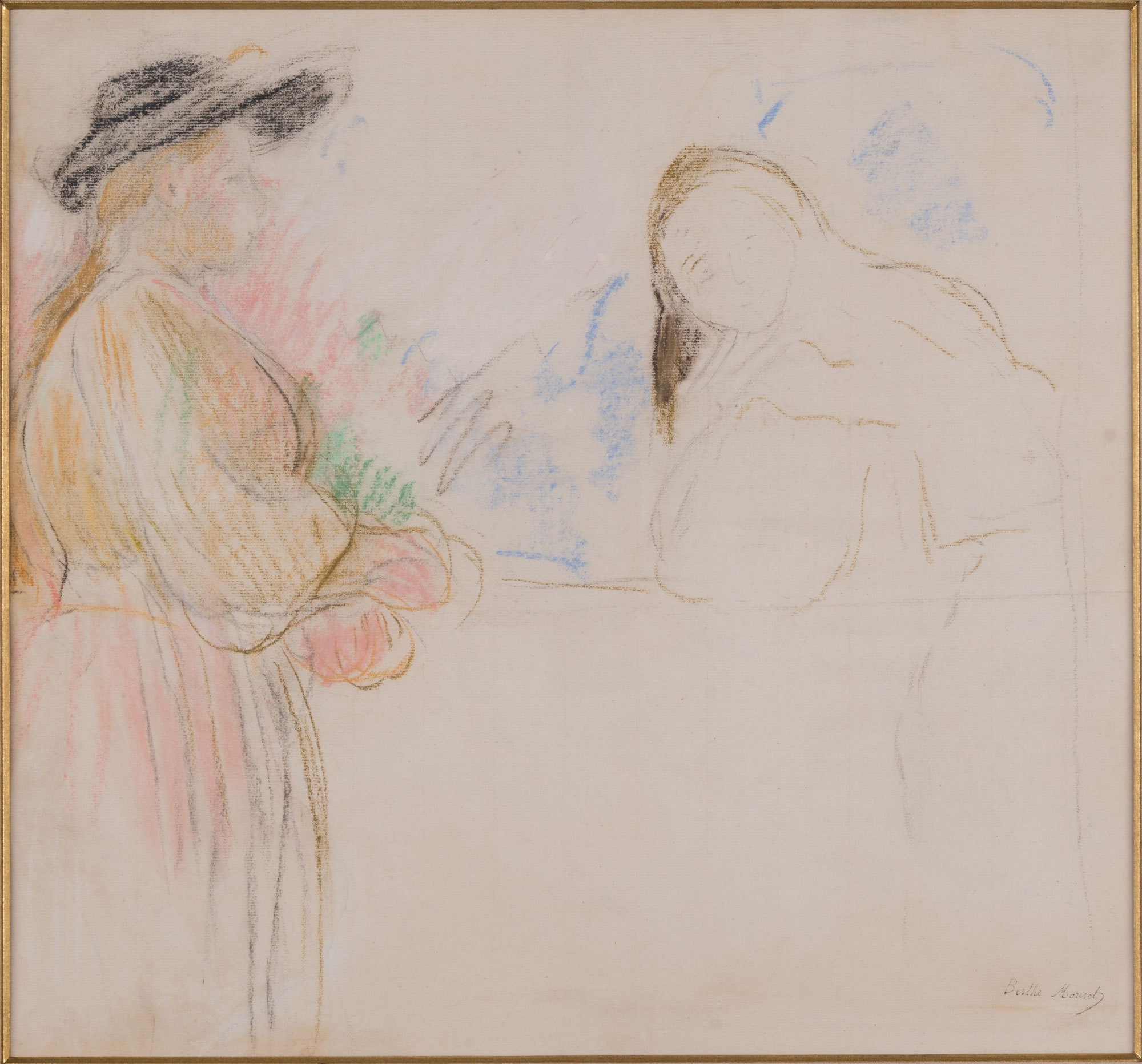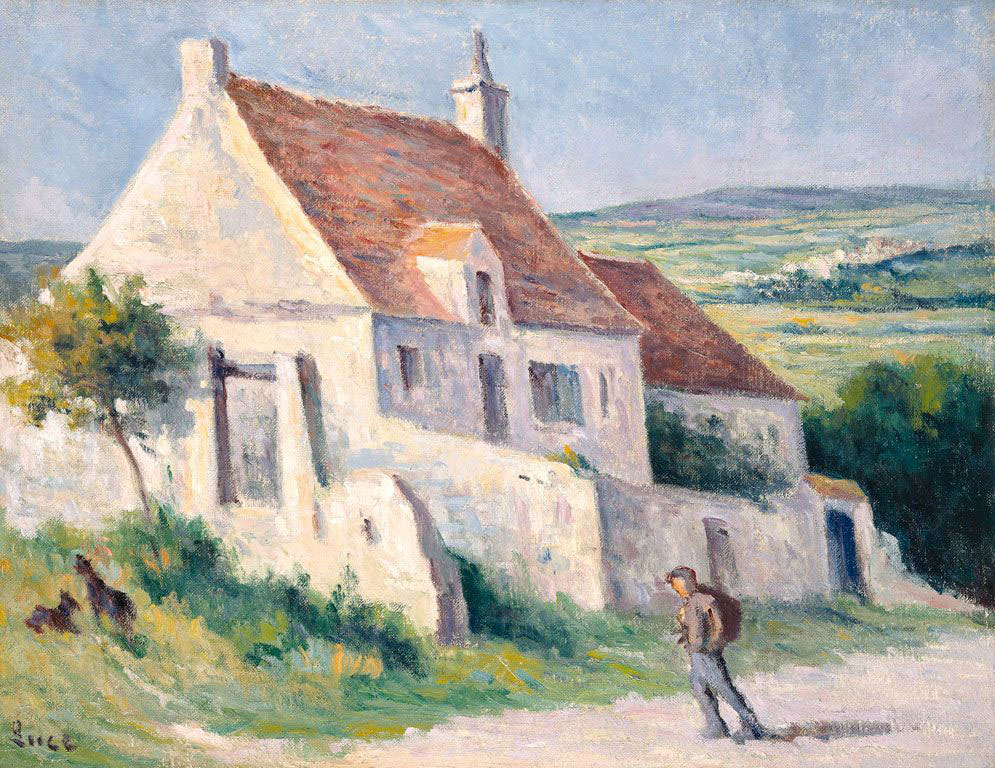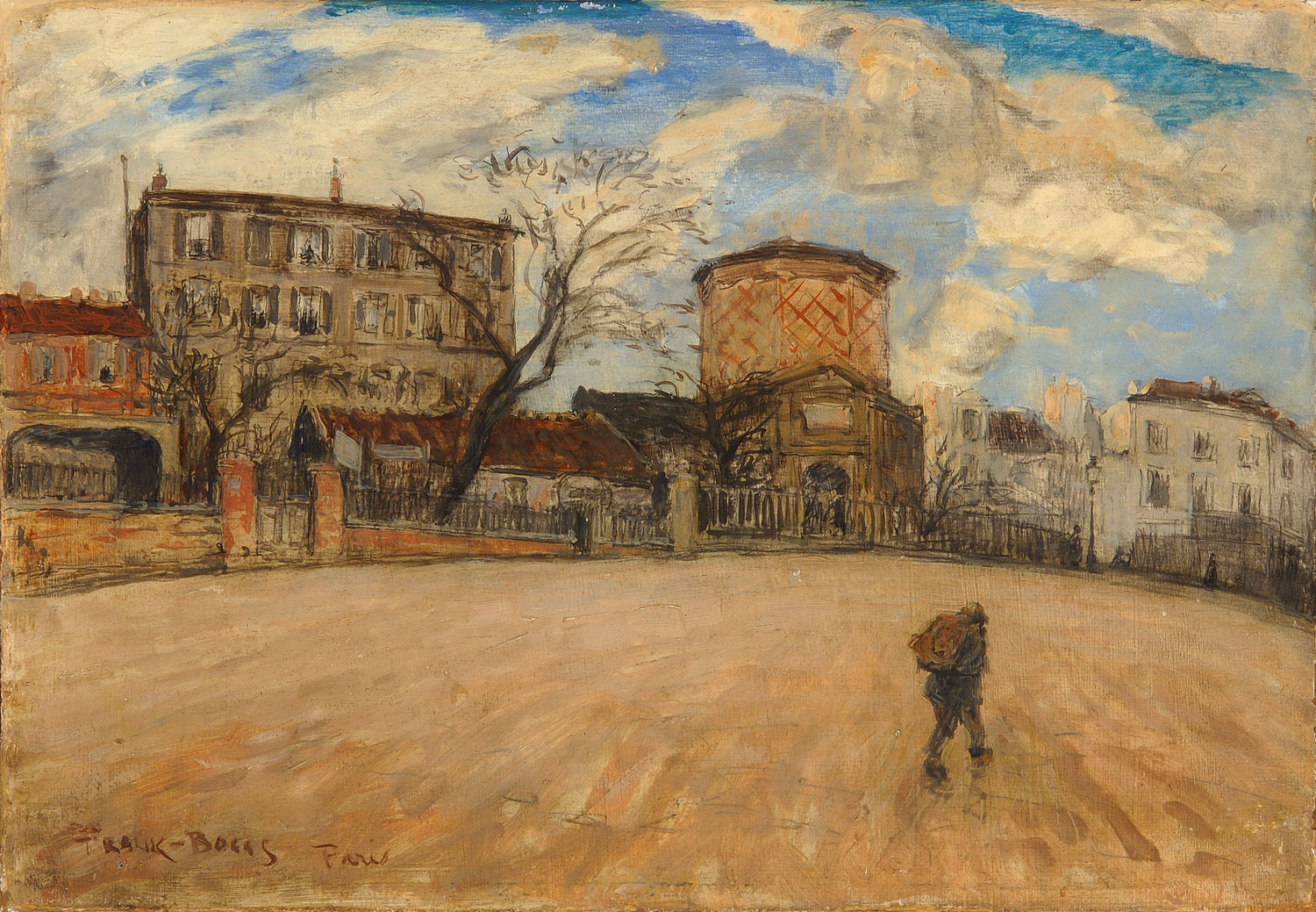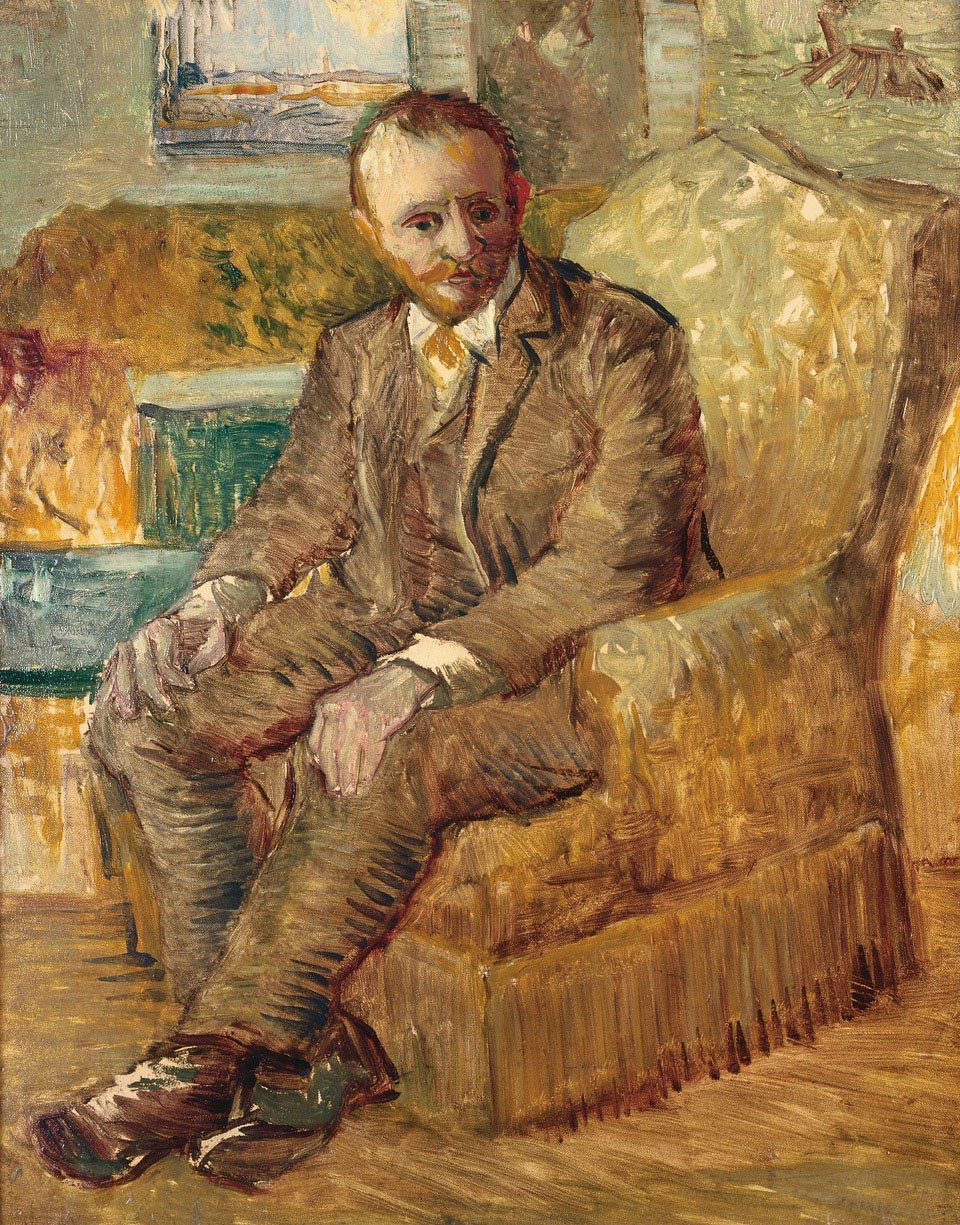A central principle of impressionism is the idea that artists translated their personal perceptions of the natural world by painting subjects directly in front of them. Though not all of the artists featured in this section were French, all worked in Paris and in the French countryside, where they shared ideas about how to depict immediacy. Loose brushstrokes and varied paint application imply that the subject could have been rendered in a single moment, signaling to viewers that the world had been translated through an individual hand. These paintings reveal how artists rendered effects of light, color and atmosphere differently. The idea of perception is reinforced by the many human figures who are shown perceiving and experiencing the world around them. The artists and these figures invite us to do the same.
Rachel Allain and Sally Lyle
Eugène Boudin’s painting marks a key precursor to the impressionist movement. Paint tubes, invented near the start of his career, enabled easier outdoor, plein-air, painting. Road in Countryside depicts an open dirt lane that follows fields of green and a wash of a bright red field with small speckles of pink and white flowers. The painter gives two thirds of the composition to depicting the sky, where dark clouds with small patches of blue peeking through hang above the small lone figure walking on the path. While the paint is not as thickly applied as other paintings in this section, loose brushwork is already visible. Notice Boudin’s attention to weather and time: does the cloudy sky show the approach of an ominous storm or a hopeful sky after passing rains?
Rachel Allain, Class of ’20
Eugène Boudin, (French, 1824–1898), Road in Countryside, n.d., oil on canvas, lent by the Montgomery Museum of Fine Arts, Montgomery, Alabama; bequest of William Pelzer Arrington in memory of his mother, Ethel Pelzer Arrington.
While little is known about Edmond Petitjean’s life and training, he was a prolific plein-air painter, and in the early twentieth century other artists made copies of his paintings in the Musée du Luxembourg in Paris. This painting melds greens, browns, and blues to convey a momentary effect along the rocky coast in rural Brittany, a region in France. Small figures gathering clams blend with the landscape, nearly becoming part of nature as Petitjean applies even attention to people and rocks with his brushstrokes.
Dr. Emily C. Burns
Edmond Petitjean, (French, 1844–1925), Les Côtes du Nord, Bretagne (The Shell Gatherers), ca. 1915, oil on canvas, Jule Collins Smith Museum of Fine Art, Auburn University; gift of Noel and Kathryn Dickinson Wadsworth.
Pierre-Auguste Renoir used a blended approach that employed soft edges and few lines to convey an instantaneous quality with light effects, leaving an “impression” of an everyday scene of a mother and her son walking in a small village. His fixation on the positive aspects of life is apparent in this painting through his focus on the parent-child relationship.
Sally Lyle, Class of ’22
Pierre-Auguste Renoir, (French, 1841–1895), Mère et son enfant dans un village (Mother and Child in a Village), 1890, oil on canvas, Jule Collins Smith Museum of Fine Art, Auburn University; gift of Bill L. Harbert, class of 1948.
The impressionists painted everyday spaces to which they had access. Male painters avidly engaged with the modernization of Paris, while female artists, including Berthe Morisot, more often presented the domestic arena. With a focus on the median between private and public spaces implied by large windows and verandas of the Parisian elite, she sketches two women engaged in conversation. Art historians have analyzed the artist’s apparent embrace of pastel colors and loose brushwork, practices that reviewers saw as a “feminine” style. The linear and gestural detail in this sketch, along with insistent pinks, yellows, and light blues, push against Morisot’s contemporary critics who presumed that women artists were incapable of incorporating line into their work.
Michael Harding, Class of ’20
Berthe Morisot, (French, 1841–1895), Jeunes Filles sur le balcon (Young Ladies on a Balcony), 1893, pastel and charcoal, Jule Collins Smith Museum of Fine Art, Auburn University; gift of Noel and Kathryn Dickinson Wadsworth.
An anarchist in both art and politics, Maximilien Luce emphasized ideas of labor, fatigue, and technology throughout his work. This painting displays the impressionist techniques of quick, varied brushstrokes, the use of unmixed colors, and an attention to movement as the wind brushes against this rural house. Similar to Frank Myers Boggs’s nearby painting of a street in Paris, Luce’s painting depicts a lone wanderer in the stark sunlight. With his earth-tone clothing and rucksack, he appears to be a working-class laborer. Knowing Luce’s political beliefs, do you think he intended to express a political meaning by portraying a worker in this way?
Claye Gillis, Class of ’20
Maximilien Luce, (French, 1858–1941), Maisons aux Mousseaux (Houses at Les Mousseaux), ca. 1922, oil on canvas, Jule Collins Smith Museum of Fine Art, Auburn University; museum purchase with funds provided by the Gerald and Emily Leischuck Endowment for Museum Acquisitions.
After forging a successful career painting marine landscapes and exhibiting them as well as cityscapes in the Paris Salon, Frank Myers Boggs became a French citizen in 1923. Settling in Montmartre, a bohemian neighborhood in the north of Paris, he renders a lone figure walking up the winding Rue Lepic in this painting. The pronounced diagonal brushstrokes behind the walking figure and the directional lines on the street and clouds give his movements a sense of speed. Boggs was connected with the neighborhood art world, including art dealer Theo Van Gogh, who lived in an apartment on this street with his brother for some time. Two of Boggs’s paintings are depicted on the wall in the background of Vincent’s portrait of Scottish art dealer Alexander Reid, reproduced here. Boggs inscribed one of these paintings to “my friend Vincent.”
Michael Harding, Class of ’20
Frank Myers Boggs, (French, b. United States, 1855–1926), Paris, 1915, oil on wood panel, lent by the Montgomery Museum of Fine Art, Montgomery, Alabama; bequest of William Pelzer Arrington in memory of his mother, Ethel Pelzer Arrington.
Vincent Van Gogh, Portrait of Alexander Reid, ca. 1887, oil on canvas, Fred Jones Jr. Museum of Art, University of Oklahoma, Norman, OK.
